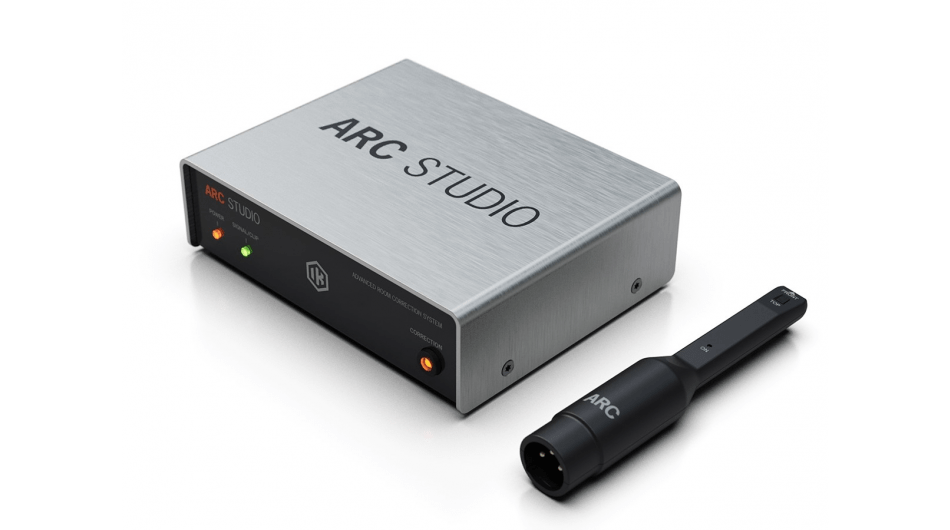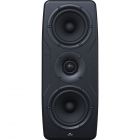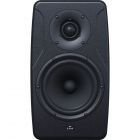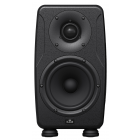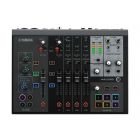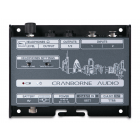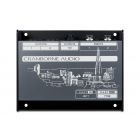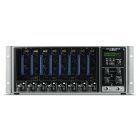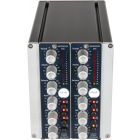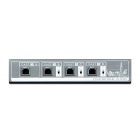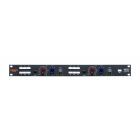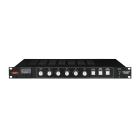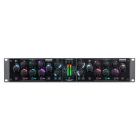No studio is perfect, and although studio monitors are moving more and more toward absolute neutrality, there always remain small imperfections. It's here where ARC Studio from IK Multimedia comes around the corner. What the ARC Studio does is also known as "Room Corrections." By adding or removing exactly the right frequencies, we "make" the room you're sitting in, and the monitors you're listening with, as flat as physically possible. But how:
Read moreMeasurement microphone
The ARC Studio comes with its own measurement microphone, the MEMS measurement microphone. To know which frequencies are causing problems in your listening position, they must be measured. It is therefore essential that this is done with a dedicated measurement microphone that is calibrated to the system being used. You place this measurement microphone 7 or 21 precise positions around the listening position and then let the ARC studio perform its measurement. This can sometimes be a somewhat challenging task, but IK Multimedia clearly indicates for each meeting where to place the microphone and guides you all the way through it. So no higher education is needed to perform a mega secure meeting, you just follow the instructions.
Software, or not?
The ACR Studio's software, ARC 4, takes these measurements and lays out an EQ curve that exactly matches your environment. By boosting or eliminating specific frequencies, ARC 4 thus corrects your room to be almost completely perfect.
If you are not completely satisfied with what the software has done, you can still manually add and remove frequencies. ARC 4 still shows you what impact it would have on your room according to the measurements.
An extreme correction can look very nice in theory, but can sometimes make it sound "fake." It is for this reason that with your correction you can choose from "default" advised correction, sharp (extreme correction) and broad (light correction). If you prefer corrections in the low or high to be ignored, simply place a high-pas or low-pas filter over the part you want to ignore and voila the room sounds completely to your liking.
No more back and forth
Your mix often sounds great in your studio! You've got the compression on the low-end tight and thick, the vocals are lovely with above the mix without pushing the rest away. The kick just got that boost around 6k to create punch, and the snare has just enough saturation to sound rock hard without having to raise the fader all the way up. But then.... You take your mix to the car, or a small high-fi speaker and you don't actually recognize the mix again. It no longer sounds like anything at all. And so begins the game of constantly going back and forth to get the mix right.
The ARC Studio allows you to check your reference track in the studio on any system you want. The corrections the ARC Studio makes can also be used to mimic the frequency response of car speakers, high-fi speakers, headphones and even a phone speaker, for example. Check if the mix on a phone also sounds good without leaving the studio. Just load the specific frequency response and switch seamlessly between crappy headphones, the car or a nice high-fi syseem. Ideal for mastering!
Hard tools
Possibly one of the biggest advantages of the ARC Studio is that the correction takes place in the Hardware rather than a plugin you have on your master bus. Plugins of this size can cause latency and still demand quite a bit from your CPU. If you do not have a very powerful setup this can mean that you limit yourself in how much you can do within the limits of your CPU. In addition, it is often forgotten to turn off the correction when rendering the track, resulting in a very specific EQ on your beautiful track that was not intended.
With the ARC studio this is a thing of the past because the correction runs on the hardware unit. This makes the latency unrecognizable. It also no longer requires extra power from your computer. And switching the correction on and off is as simple as pressing a button. It is this that makes the ARC studio truly unique, as this technology in a hardware format has never been marketed for such a price. Really worth it!
Specfications:
- Audio conversion and internal processing sampling rate: 96 kHz
- Resolution audio conversion: 24-bit
- Resolution internal processing: 32-bit float
- Frequency range: 2 Hz - 45.0 kHz (- 2.0 dB)
- Dynamic range: 120 dB (A-weighted)
- THD (20-20 kHz): 0.00035%
- THD+N (1 kHz@-1dBFS): -107 dB
- Channel crosstalk (1 kHz): -122.5 dB
- Max. phase deviation: +7° 20Hz, +16° 22kHz
- Input impedance (balanced): 20 kOhm
- Output impedance (balanced): 50 ohms
- Maximum output level: +17 dBu
Latency
- Natural phase mode: 1.4 ms
- Linear phase mode: 42 ms
Included
- ARC Studio room correction processor
- ARC measurement microphone (version dependent)
- ARC measurement microphone clamp (version dependent)
- USB C-type to USB A-type cable (1.5 m)
- Power supply unit
- Registration card


